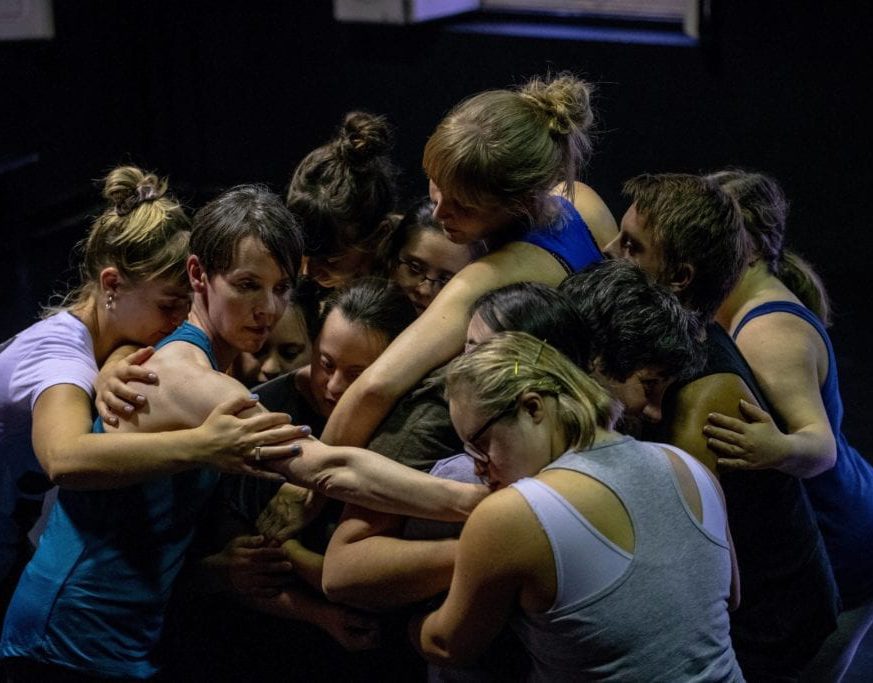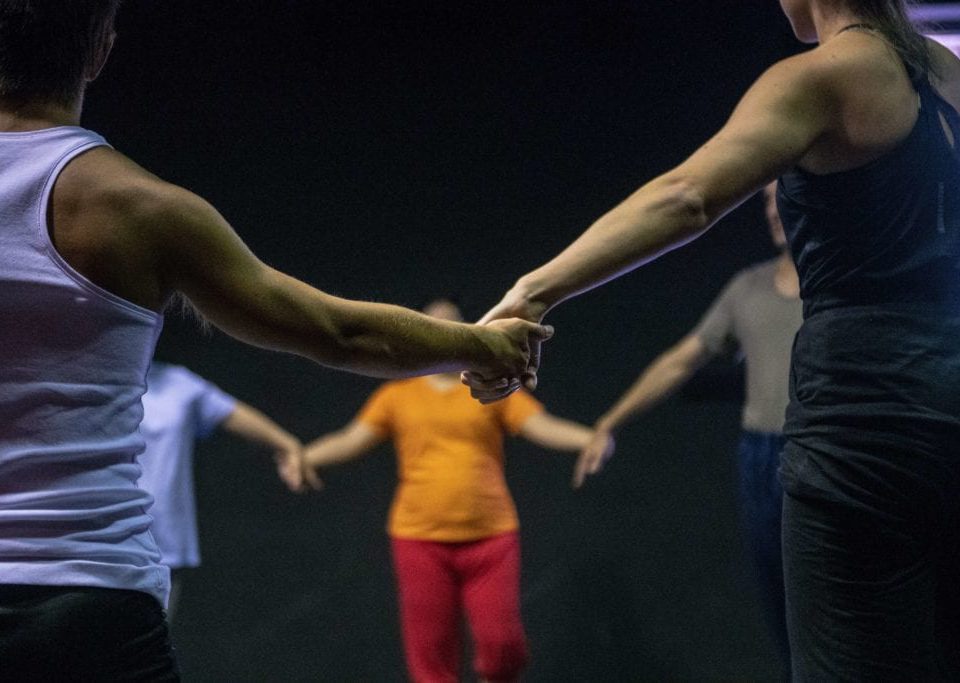SHIFT is a collaboration between Northern Ballet (UK), Psico Ballet Maite Leon Foundation (Spain) and Stichting Misiconi (Netherlands).
This project aims to:
* develop new teaching practice for dancers with additional learning support needs that enables them to fulfil their potential and is underpinned by safe practice.
* share good practice; initially between the European collaborators, and subsequently the outcomes to an international audience of dance artists and teachers in community, education and professional settings.
Through this we strive to raise the profile and skills of dancers with additional learning support needs across Europe.
Input and support from a Dance Science perspective has been provided by the University of Edinburgh and the University of Leeds have evaluated the impact of the project. This has ensured that the learning and outcomes are underpinned by academic research.
We have used a biopsychosocial model that looks at the interconnection between physical (biological), psychological and social aspects of dance training.
Core values that underpin this project
As a collective we have common beliefs and goals:
* each dancer is an individual and fulfilling potential as an accomplished dance artist is key.
* raising aspiration and motivation through exposure to professional practice and performance of work.
* technical dance skills and creativity are intertwined: both equally underpin dance training.
* safe practice underpins the planning process.
* developing dancing skills through autonomy and self-directed learning.
* the social and emotional wellbeing of practitioners and dancers is paramount.


Why this group came together
Inclusive dance is a broad field. Research on inclusive teaching practice is limited and few resources are available concerning dance training specifically for dancers with additional learning support needs. Resources that are widely available, focus mainly on physical disability or adapting class material for integrated groups with a wide range of needs (physical and learning).
In this project we wanted to address the needs of our dancers, examine our current practice and find the best methods to enable them to fulfil their potential. While each partner’s group was comprised of individuals, we had commonalities:
* a high percentage of dancers with Down syndrome
* a high prevalence of dancers with hypermobility
We also had shared concerns:
* how can we ensure our dancers are training safely?
* what are the most effective methods to communicate instructions, concepts and feedback?
* how can we develop the skills our dancers need to work towards fulfilling potential as accomplished dance artists?
This resource shares the most significant outcomes from our experiences, observations and shared practices during the project.
The project approach
The project consisted of five residencies with three focusing on sharing practice and devising new approaches to teaching technical dance skills:
* strength and alignment
* balance and co-ordination
* elevation and travel
Between each residency, the activities and approaches were tried, tested and developed. Each partner worked with their dancers and used monitoring and evaluation tools to measure and chart their progress. Peer observation and reflection on teaching methods were central to the process.
Outcomes
Teaching approach
Through this process we have developed a methodology: teaching approaches that we found worked well for our dancers and recognised their learning needs.
Activities
We also developed a wealth of activities. While each partner had the same starting point and aims, we each took the activities in different directions due to our own individual practices and our dancers’ needs. This website shares a selection of the activities we found worked well.
Monitoring and evaluation method: the wheel
A qualitative evaluation method we used to monitor our dancers’ progress.
Safe practice
We consider the physical, psychological and social implications of hypermobility. Information on safe practice in relation to this can be found in this resource.
Who is this resource is for?
Through this project, while we have developed our own practices and dancers’ skills, we also hope to address a gap in current dance resources by sharing our learning.
* while this resource is intended as a toolkit to be used by dance practitioners at community, educational and professional level, it may also be useful for dancers themselves. It aims to provide a framework, including information on what, why and how, so that the user can develop their own activities, specific to their needs.
* the resource is primarily aimed at experienced dance practitioners. However, it may also prove useful and informative for teachers who are starting out.
Throughout the process, all teachers involved have been aware that their own practice has many influences. Our own past teachers and experiences of learning and dancing are central to the practitioners we become. We have also explored other movement practices, as part of our research, which we have adapted for our purpose or taken inspiration from. These have included Skinner Releasing Technique, Pilates, Feldenkrais, Progressing Ballet Technique, yoga, Tai Chi, Laban, Fighting Monkey, Contact Improvisation and improvisation techniques.
The European Commission support for the production of this publication does not constitute an endorsement of the contents which reflects the views only of the authors, and the Commission cannot be held responsible for any use which may be made of the information contained therein.





